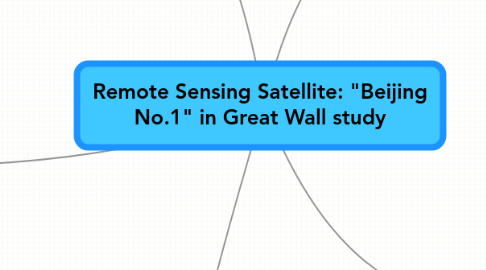
1. Spatial Archaeology
1.1. detect ancient sites
1.2. investigate underwater sites
1.3. analyze ancient environments
1.4. make maps & build spatial info
1.5. rebuild ancient sites
2. Beijing 1
2.1. Comparison with SPOT
2.1.1. spatial resolution= 2.5m
2.1.2. B1 domestic = cheaper for Chinese scholars
2.1.3. Great Wall= 2-3 pixels
2.1.4. auto-extraction also somewhat problematic
2.2. Details
2.2.1. launched in 2005
2.2.2. launched by China
2.2.3. one of the Disaster Monitoring Constellation (DMC) moonlet
2.2.4. wide image range= 600km
2.2.5. spatial resolution= 4m
2.2.6. high temporal resolution= 2-3 days
2.2.7. Great Wall= 1-2 pixels
3. Extraction
3.1. auto-extraction
3.1.1. Linear Object methods
3.1.1.1. filter methods
3.1.1.2. Grade Direction Analysis
3.1.1.3. Template matching
3.1.1.4. SNAKE Model
3.1.1.5. GIS method
3.2. Characteristics
3.2.1. when spatial res. less than 10m = linear
3.2.2. higher density than environment = high echo on microwave
3.2.3. higher density than environment = high spectral value
4. Study Subject
4.1. The Great Wall of China
4.1.1. Ming Dynasty
4.1.2. mainly: soil/brick
4.1.3. several meters high
4.1.4. six meters wide
4.1.5. New node
4.2. Huanghuacheng section
4.2.1. repaired contemporary era
4.2.2. relatively good condition
4.3. Badaling Section
4.3.1. some parts repaired in 2004
4.3.2. mostly collapsed
